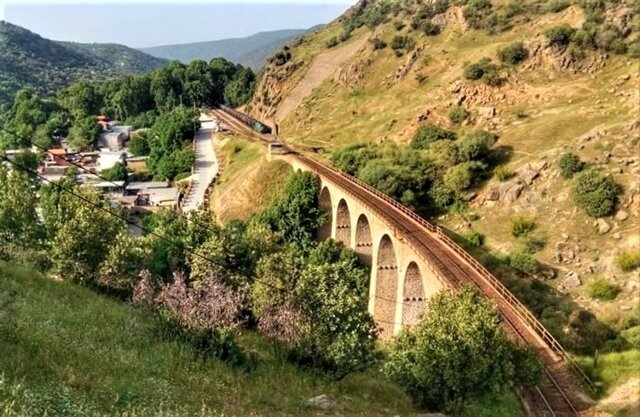ICOMOS to assess Iran’s cross-country railways for UNESCO tag

TEHRAN – A team of experts from the International Council on Monuments and Sites (ICOMOS) is scheduled to visit Iran late September in order to assess Iran’s cross-country railways for a possible UNESCO registration.
“The assessors will arrive in Iran early in Mehr (Sep. 23-Oct. 22) and they intend to conduct field surveys for about two weeks,” deputy tourism minister Mohammad-Hassan Talebian said on Sunday, CHTN reported.
“Evaluators will inspect all railway-related sites, including museums, stations, tunnels, bridges, railways, and natural and cultural heritage located in the railway corridor,” the official added.
In 2017, Iran’s Cultural Heritage, Handicrafts and Tourism Organization, which has recently turned to a ministry, in close collaboration with the Islamic Republic of Iran Railways submitted to UNESCO a preliminary dossier titled “Trans-Iranian Railway”.
The industrial heritage, which dates from the World War I and II, contains expanded railway networks mainly stretched from south to north. It also includes a variety of monuments such as Tabriz railway station as well as Veresk and Sekhat-tala bridges built at hard-to-access points of deserts or highlands.
Such bridges are the first of their kinds in the country which were constructed based on modern technical and engineering calculations and from materials like metal and concrete.
Railway can be regarded as a turning point for comprehensive developments in Iran. These developments include a wide spectrum of various economic, commercial, social, cultural and even political aspects in a sensitive and important period of contemporary world history. Consequently the 1394 kilometers long Trans-Iranian Railway was built with a width of 1435mm and 90 working stations along its route.
It starts at a point north of Torkaman port located southeast of the Caspian Sea. After going through Sari and Qaem-shahr cities, the railway enters the mountainous region of Alborz through the high Firooz-kooh Pass which is linked with Tehran and Varamin Plain by numerous bridges and tunnels. Further on after crossing flat lands of Qom and Arak, the Trans-Iranian Railway penetrates into Zagros highlands in Lorestan Province and passing through a large number of tunnels and bridges reaches Andimeshk situated in the low Khuzestan Plain. Finally extending to the vicinity of Dezful, Ahwaz and its grand bridge on Karoon, the Trans-Iranian Railway is divided into two branches ending separately at Khoram-shahr and Imam-Khomeini ports on the Persian Gulf.
Moreover, Trans-Iranian Railway features a complete collection of beautiful natural resources including mountain ranges, ponds, peaks, slopes, forests, plains and grasslands as well as deserts and steppes can be seen on this course belonging to a variety of weather conditions such as temperate, humid, arid and hot.
AFM/MG
Leave a Comment